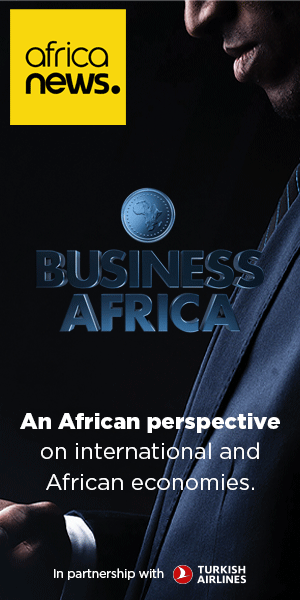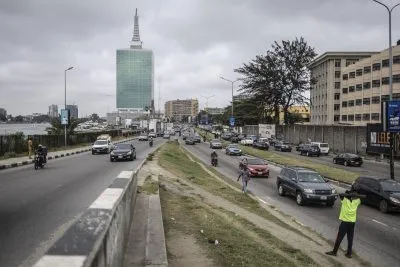Africa has a huge ‘missing middle’ – that sector of entrepreneurs who fall between micro and large – that is potentially worth billions and could generate hundreds of thousands of jobs. The problem is being able to secure finance without collateral or business history. Now, it seems, a solution has been found and is working.
Imagine a magic moment in the dreams of many entrepreneurs of small and medium enterprises looking for finance: the bank manager smiles and shakes her or his hand, the answer is “yes”! Within days, funds will flow to get the business pumping, to buy equipment or stock, or to work on customer orders.
But behind the bank manager’s smile, there is concern. Will the entrepreneur succeed? Will the loan be repaid? Is there a magic formula to work out who to give loans to, who to turn away? While so far no one has come up with a foolproof magic formula, a new computer tool seems to be the next best option. It provides bank managers and other financiers with the invaluable ability to accurately evaluate their borrowers.
A leading African bank has used the new tool to reduce its loan approval processes from weeks to three days. After testing over 12 months (as part of its lending policy to 3,000 small, medium and micro enterprises (SMMEs), Standard Bank is preparing to roll out the tool across Africa. It anticipates a loan portfolio of up to $141m spread across thousands of businesses. This will give the bank considerable competitive advantage as it cuts a trail into the giant new banking territory.
Getting it right in SMME lending is critical. Bankers know how tough the business environment is and how many obstacles need to be overcome. More significantly, will the entrepreneur use the cash as agreed and what are the chances he or she will one day return the cash with the agreed returns for sharing the risks?
For a bank, a loan that fails 100% can wipe out the gains on 50 loans and perhaps months of work if each loan generates returns of 2%, after deducting cost of finance and overheads. Picking the right people to lend to is critical.
For this reason, many banks believed lending to SMMEs was bad business. They preferred big loans to established borrowers – there was more history to fall back on and the larger sums involved meant more returns for the time of skilled bank personnel involved in setting up and screening the loan.
In some African countries banks are blocked from SMME lending, for instance, by central bank directives banning banks from lending without collateral security such as building or marketable assets for 100% of the loan value, which effectively means banks are only allowed to lend to the rich.
But SMMEs, which can generate four out of every five jobs in an economy, need bank finance to grow even more than big firms, as large businesses can also fund growth on capital markets or through their own cash flows. The World Bank’s Enterprise Surveys and Investment Climate Assessments report that SMEs rank the access to, and cost of, finance as among their greatest obstacles to growth.
Lending conundrums
If banks do wish to lend to SMMEs, what is the process to decide whether or not to approve the loans? Many SMMEs do not have clear financial statements or a business plan that an experienced bank officer can study and check. The process can be expensive, compared to the loan amount demanded, to provide enough resources to evaluate the company, hire experienced staff to read business plans and financial statements, and to talk to suppliers and customers.
Since SMME lending represents many smaller loans, the key to success is cutting transaction costs without compromising quality. With subjective evaluations by individual officers, banks are vulnerable to staff turnover and fraud, and find it hard to achieve big increases in the number of evaluations handled.
In the US, banks only started to increase lending to SMEs in the 1990s after they moved from reading business plans and subjective evaluations to evaluating the entrepreneurs themselves in a low-cost automated way, using individual credit histories and scoring. In developing countries there may not be verifiable credit histories.
Bailey Klinger, senior research fellow at Harvard’s Centre for International Development (CID), and Asim Khwaja, Professor of Public Policy at the Harvard Kennedy School of Government, attended a CID Growth conference in South Africa in 2006 and learnt that South African entrepreneurs have huge problems in accessing finance,
although the local financial sector is among the more developed. After months of analysis, their search took them to low-cost screening tools and alternative financial contracts as methods to stimulate entrepreneurial finance.
Many developing countries show a ‘missing middle’, meaning that the distribution of businesses by size shows that there are too few small and medium enterprises compared to the distribution in developed countries. Developing economies may have micro and large enterprises, but economic development is held back because finance is scarce for micro enterprises to grow and fill the gap. SMMEs are the best way of creating jobs and stimulating growth, and are more effective than informal microenterprises targeted by microfinance institutions (MFIs). If lenders get it right, the sector is large enough to generate giant returns, but they need to bridge the knowledge gap of how to give these loans effectively. For example, according to Entrepreneurial Financial Lab, better access to finance could create 2m new SMEs in Nigeria, and over 0.5m in each of Kenya and South Africa.
Klinger and Khwaja did some initial testing in South Africa with local financial institution business partners and, in 2008, Google.org and SNV Latin America provided a grant to launch the Entrepreneurial Finance Lab (EFL) project within CID.
The idea was to develop a system of psychometric testing, based on answers to specific questions, which would reveal an applicant’s character traits, such as honesty, determination, etc on which the loan application would be approved or rejected.
The lab worked with the world’s leading psychometric firms and entrepreneurship researchers to assemble an enhanced prototype psychometric entrepreneurial assessment. They also built a network in commercial banks, microfinance institutions, venture capital funds, and entrepreneurship training programmes in seven African and Latin American countries, using eight languages, to pilot test the tool.
They gave the test to over 2,300 entrepreneurs, ranging from single entrepreneurs in micro enterprises borrowing $800, to medium enterprises receiving financing of over $350,000. By selecting clients randomly, they were able to see how well statistically the test could indicate the bad performers who defaulted and whose businesses had failed, and the good performers who built successful businesses and repaid the financing.
They found their test achieved better predictive power than the credit-scoring mechanisms common in developed countries, which rely on audited financial statements and business history. They suggested the tests could lower default rates by 20–45%.
In 2010, EFL, co-founded by Klinger as CEO and Dennis “DJ” DiDonna as Chief Operating Officer, became an independent private organisation aiming to scale up the project by working with commercial institutions. It still works closely with CID’s Entrepreneurial Finance Lab Research Initiative, which continues research into the impact of psychometric tools on access to finance, entrepreneurial training and skills, and experimental alternative financial contracts.
DiDonna told African Banker how it works: “It is a little test of 200 questions and it takes 30-40 minutes to fill out, and it requires about Grade 3 qualifications in terms of grammar and literacy. We translate it into local languages, including slang and proper Swahili.”
The test can be done on a touch-screen computer, so that if entrepreneurs cannot get to the banks, the bankers can get to them in places such as Gikomba market, spread across four square kilometres in Nairobi. EFL started testing across several African and Latin American countries, working with a range of financial institutions.
Standard takes bold gamble
Standard Bank is one of the most dynamic banks in expanding its Africa-wide business and is adopting the test with enthusiasm. Amrei Botha, Head SME Banking for Standard Bank Africa, told African Banker what happened after EFL approached them in April 2010: “Our greatest challenge in providing access to finance in the small and medium enterprise market has always been the lack of financial statements and collateral in an environment where there is also a lack of credit bureau data. The psychometric assessment allowed us to move completely away from our traditional lending approach, which was very reliant on obtaining financial statements and collateral from clients.
“We made a decision as an organisation to be bold and use the opportunity to develop a new approach to evaluating new clients and thereby offering greater access to finance to SMEs in the markets we serve. This decision led to us to reducing our loan disbursement process from weeks to less than three days; we’ve reduced our application forms from 12 to 19 pages down to two pages and we now offer unsecured loans of between $300 and $30,000 to SMEs in Africa without requiring financial statements or personal guarantees.
“Over the past 12 months we’ve deployed the tool in four countries, testing more than 9,000 small and medium enterprise owners, and we have disbursed loans to the total value of more than R250m ($30m) to more than 4,880 businesses.”
She explained that the tool only helps predict the probability of default for every loan applicant and the bank’s business and credit teams still determine the appropriate risk classifications, using the psychometric assessment score as part of an end-to-end lending process, which also includes Standard Bank’s own method to determine applicants’ affordability level and assess fraud risk.
EFL continues to gather data and evaluate it with a range of financial institutions, including venture capital firms and business incubators in several countries. According to DiDonna, the goal is to improve the accuracy of the tool in different markets. In the last nine months, he says, EFL has logged a 20% boost in predictive power in the countries for which they get data and research outside the test, including face-to-face meetings to check different characteristics.
“When we move into a country we need to do an analysis of where the norms are. The same dimensions are indicative of success whether in rural Peru or urban Dar es Salaam, but calibrating the EFL test means identifying and measuring how these characteristics change in different geographies, business sizes and cultures.”
He adds that there are even some differences within countries, for instance between entrepreneurs in Lagos and in Abuja. “Banks should measure the horse, the business; we measure the jockey.”
It works for Standard Bank, which says it can disburse loans quickly and at rates lower than traditional players such as MFIs. In addition, MFIs often lend to a group and some entrepreneurs do not want to account to a group for a loan or to share their financial position and business secrets.
Botha says: “Many commercial banks only focus on the top end of the small and medium enterprise market, whereas we are now able to serve lending needs across the SME spectrum, starting with loans as small as $300 for periods as short as three months.” Over the next 12 months, Standard Bank is extending what they call the “SME Quick Loan” solution to all countries in Africa where they operate.
Last October, EFL was one of 14 winners of the G20 SME Finance Challenge, picked from a pool of 345. In many areas, Africa is leapfrogging decades of slow progress in developed countries by speed in adopting the best in innovation and technology. Technology that helps banks to lend to SMMEs could be one of the most important leaps forward.
Want to continue reading? Subscribe today.
You've read all your free articles for this month! Subscribe now to enjoy full access to our content.
Digital Monthly
£8.00 / month
Receive full unlimited access to our articles, opinions, podcasts and more.
Digital Yearly
£70.00 / year
Our best value offer - save £26 and gain access to all of our digital content for an entire year!

 Sign in with Google
Sign in with Google 





